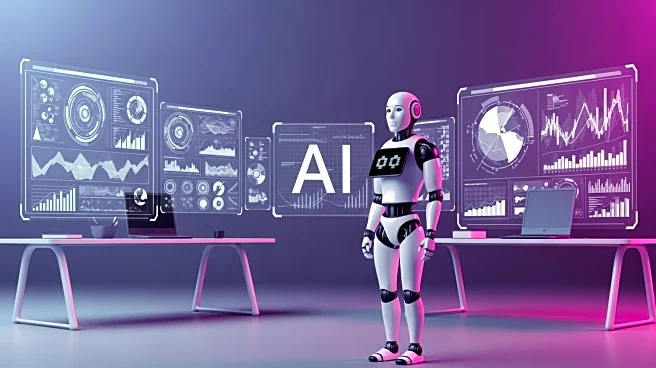What's Happening?
Visier, a leader in Workforce Intelligence and AI solutions, has published its 2026 Trends Report, focusing on the role of AI in reshaping leadership and workforce strategies. The report outlines five key trends that Chief Human Resources Officers (CHROs)
should consider as AI becomes more integrated into business operations. It emphasizes the importance of human leadership in the AI era, suggesting that AI should be used to enhance human capabilities rather than replace them. The report calls for business and HR leaders to empower managers to use AI as a collaborative tool, thereby improving performance and profitability. Visier's report stresses that organizations that leverage AI to support their workforce will be better positioned to succeed amidst external challenges.
Why It's Important?
The integration of AI into business processes is rapidly transforming the workplace, making it crucial for organizations to adapt their leadership and workforce strategies. By focusing on human leadership and the strategic use of AI, companies can enhance innovation, creativity, and connection within their teams. This approach not only boosts performance but also ensures long-term sustainability and success. As AI continues to evolve, businesses that prioritize human-centric strategies will likely outperform those that do not, making this report a vital resource for executives aiming to navigate the complexities of AI adoption.
What's Next?
Organizations are expected to increasingly adopt AI tools that enhance human capabilities, with a focus on empowering managers to use AI for strategic decision-making. This shift will likely lead to a reevaluation of existing tech stacks and the development of new AI-driven solutions that support workforce planning and talent optimization. As companies implement these changes, they will need to ensure that their workforce is equipped with the necessary skills to effectively collaborate with AI technologies.
Beyond the Headlines
The report highlights the ethical considerations of AI adoption, urging leaders to use AI responsibly and transparently. By fostering a culture of understanding and collaboration, businesses can mitigate fears associated with AI and create a more inclusive and innovative work environment. This approach not only benefits the organization but also contributes to broader societal advancements in AI technology.













